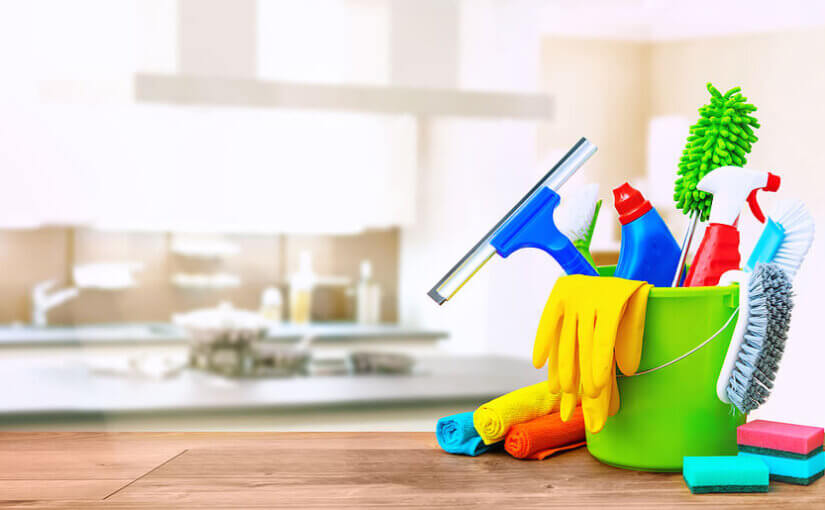Clutter is something that can get on top of us all. With busy lives, it’s often hard to find the time for a deep clean of our homes, yet studies show that 50% of us could happily live without most of the things we own.
The arrival of spring is a fantastic excuse to clear away any accumulated mess, paving the way for a positive, optimistic, and productive season.
If the idea of spring cleaning evokes spine-tingling fear, you might benefit from these helpful cleaning tips. Through learning how to organise your cleaning schedule, you’ll be well on your way to a beautiful, shining home.
The science behind spring cleaning
The concept of spring cleaning is rooted in many ancient traditions, with some stretching all the way back to 3,000 B.C.
Nowadays, many cultures and communities partake in spring cleaning, often closely tied to the arrival of the new year calendars.
But is there any scientific backing for the act of spring cleaning?
In short, yes. Studies have found that a messy and chaotic home can lead to higher levels of cortisol, the stress hormone, particularly among women. Much more than a catchy phrase, ‘clear home, clear mind’ is actually solid wellbeing advice. Clutter can stop us from getting on with and enjoying everyday things. Our consumerist culture also means we attach value to possessions, making them hard to clear out.
Mess can trigger our anxieties, contribute to loss of attention, and impact our sleep levels. It increases the potential of a cognitive overload and rising stress levels, leading us to feel overwhelmed, worried, and generally low.
How to spring clean

Now you’ve understood how a messy home can impact our mental and physical health, it’s time to learn how to undertake the ultimate spring clean.
Spring cleaning schedule
Set aside some time in your calendar to schedule your spring clean.
Choose a day or days that are typically quieter – perhaps early on a weekend when the kids are at clubs, or late one Friday or Saturday night when your housemates are out.
While it may be tempting to get it over and done with, don’t try and cram all your tasks into one window of time. Group jobs into smaller, more manageable tasks and complete them over a series of days. This way, you’ll avoid overtiredness and be able to fit your spring clean alongside your usual activities.
Group tasks together
For many, the prospect of cleaning an entire house can be daunting. To make things more manageable, group together similar tasks that target the entirety of your home.
This could be washing windows, vacuuming rugs and carpets, and mopping floors. By gradually ticking off these home-wide jobs, you’ll quickly reduce your to-do list. Room-specific tasks will then simply be a case of putting the finishing touches on your house spring clean.
Spring cleaning checklist
Home and lifestyle websites are full of spring cleaning checklists, taking you through the details to remember to ensure your home is spick and span.
Following a spring checklist helps visualise the task. Many can be adapted for your home, so you can add or removes tasks as you wish.
Spring cleaning services
A number of professional cleaning companies offer one-off spring cleaning services, ideal for busy households or those with mobility issues. Enjoy a bespoke, spotless cleaning experience and relax knowing the mess has been taken care of.
What to do with your discarded items

If you’ve carried out your deep clean correctly, you should be left with a host of unwanted clutter and discarded items.
The final step in your spring cleaning is to make sure your former belongings are properly disposed of.
Donate to charity
Taking your stuff to the local charity shop is often quick and easy, and is a good way to ensure your old belongings go to a great cause. Make sure any clothes, textiles, shoes, and books are in decent condition, and other items like kitchenware, toys, and bric-a-brac are presentable/in good working order.
If you’re donating bulkier items such as furniture, some charity shops will also offer free pick-up services.
If you’re unsure about any items, give your local shop a ring to find out if they’ll accept them.
Sell your stuff
If you have items you spent a lot of money on and want to earn some back, you could decide on a price and sell these. Whether you do this on an online selling website or through word of mouth, it’s an effective way to get rid of your unwanted goods.
Reuse and repurpose
Try your hand at some upcycling and turn your unwanted items into new treasures. Tattered clothes and textiles can be easily mended or transformed into something beautiful with the help of a sewing machine.
Plant pots and picture frames may just need a lick of paint to bring them back to life. Outgrown baby clothes or discarded toys can be turned into decorative keepsakes, like memory bears or pillows, to place around your home.
Dispose of properly
If your belongings can’t be donated, sold, or reused, disposing of them properly ensures they end up in the correct waste stream.
Old textiles including clothes can be placed in clothes banks, where charities or organisations will reuse or recycle accordingly.
Electricals, bric-a-brac, and upholstered furniture are accepted at recycling facilities – check with your local site to find out what they recycle.
For larger deep cleans and home clear-outs, you may need to hire a skip. Forge Skip Hire has a range of skip sizes for home use. Thrown-away items are removed and disposed of correctly, ensuring fewer of your belongings end up in landfill.
